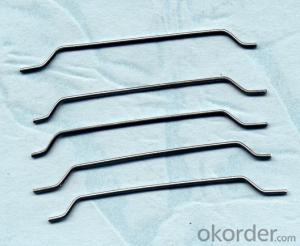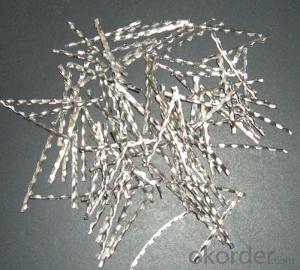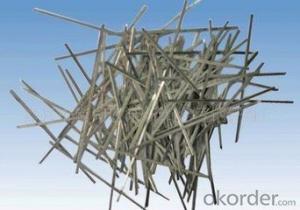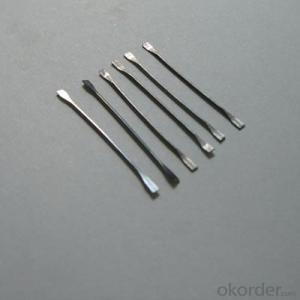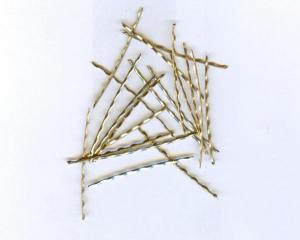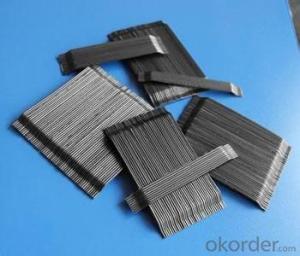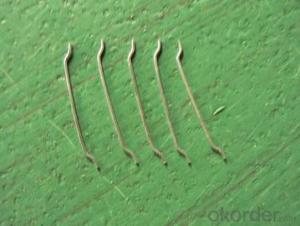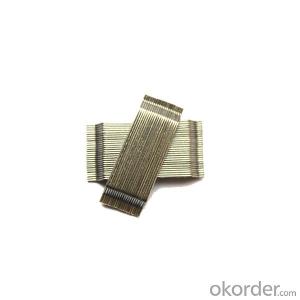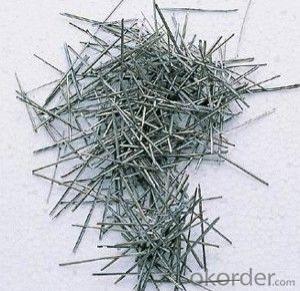Steel Fiber for Concrete Reinforcement Glued in a Row
- Loading Port:
- Tianjin
- Payment Terms:
- TT OR LC
- Min Order Qty:
- 5 m.t.
- Supply Capability:
- 30000 m.t./month
OKorder Service Pledge
OKorder Financial Service
You Might Also Like
Quick Details
Place of Origin: Hebei, China (Mainland)
Model Number: CW04
Material: Steel
Material:: Steel,low carbon steel wire
Standard:: ASTM ,ISO9001,CE
Shape:: hooked ends and straight middle
Grade:: Q195
Application:: shortcrete on tunnel, underground project, dam plate
Tensile strength:: 1100MPA to 2850Mpa
Demension:: per your requirement
Delivery Detail:: in 7 days upon receive prepayment
The products
Steel fiber for Concrete Reinforcement
1.High tensile strength
2.Length 6-60mm
3.Diameter 0.2-1.0mm
4.ISO9001, CE, TUV
Specifications
Specification | Diameter (mm) | Length (mm) | Aspect ratio (L/D) | Tensile strength (Mpa) |
0.12/6 | 0.12 | 6 | 50 | 2500 |
0.2/6 | 0.2 | 6 | 30 | 2500 |
0.2/13 | 0.2 | 13 | 65 | 2500 |
0.3/25 | 0.3 | 25 | 83 | 2500 |
0.4/25 | 0.4 | 25 | 63 | 1200 |
0.4/30 | 0.4 | 30 | 75 | 1200 |
0.5/30 | 0.5 | 30 | 60 | 1100 |
0.5/25 | 0.5 | 25 | 50 | 1100 |
0.55/25 | 0.55 | 25 | 45 | 800 or 1000 |
0.6/30 | 0.6 | 30 | 50 | 1000 or 1100 |
0.7/30 | 0.7 | 30 | 43 | 1000 |
0.7/35 | 0.7 | 35 | 50 | 1000 |
0.75/35 | 0.75 | 35 | 47 | 1000 |
0.75/60 | 0.75 | 60 | 80 | 1000 |
0.8/60 | 0.8 | 60 | 75 | 1000 |
0.9/50 | 0.9 | 50 | 56 | 1000 |
0.9/60 | 0.9 | 60 | 67 | 1000 |
1.0/50 | 1.0 | 50 | 50 | 1000 |
1.0/60 | 1.0 | 60 | 60 | 1000 |
Picture
PP bag
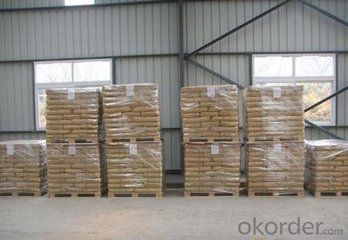
pakage
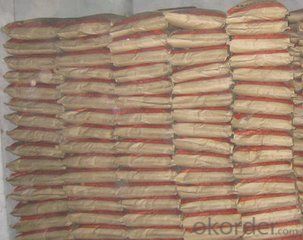
any type steel fiber
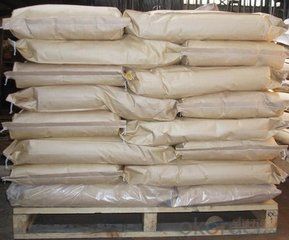
FAQ
steel fiber for concrete reinforcement glued steelfiber in a row>1200Mpa
- Q:Can melt extract stainless steel fiber be used in the construction of parking structures?
- Yes, melt extract stainless steel fiber can be used in the construction of parking structures. It provides reinforcement to concrete, enhancing its strength, durability, and resistance to cracking.
- Q:Can melt extract stainless steel fiber improve the fatigue resistance of concrete?
- Yes, melt extract stainless steel fiber can improve the fatigue resistance of concrete. The addition of stainless steel fiber helps to enhance the overall strength and durability of the concrete, reducing the risk of cracking and structural failure under repeated loadings. It provides reinforcement, increased flexural strength, and crack resistance, thus improving the concrete's ability to withstand fatigue and prolong its service life.
- Q:What is the effect of melt extract stainless steel fiber on the durability of shotcrete?
- Melt extract stainless steel fiber has a positive effect on the durability of shotcrete. It enhances the overall strength and crack resistance of the shotcrete, improving its resistance to various external factors such as freeze-thaw cycles, chemical exposure, and abrasion. The incorporation of stainless steel fiber in shotcrete helps to prevent cracking and spalling, resulting in a more durable and long-lasting concrete structure.
- Q:How does melt extract stainless steel fiber affect the drying shrinkage of concrete?
- The introduction of melt extract stainless steel fibers can have a significant impact on the drying shrinkage of concrete. When incorporated into the concrete mix, these fibers work to control and decrease the drying shrinkage by enhancing the overall cohesion and tensile strength of the concrete matrix. Throughout the drying process, concrete experiences shrinkage as a result of water evaporation. This shrinkage can lead to cracks and deformations in the concrete, which compromise its integrity and durability. However, by integrating melt extract stainless steel fibers, the concrete's ability to resist shrinkage is improved. The distinctive characteristics of stainless steel fibers, such as their exceptional tensile strength and strong bond with the concrete matrix, enable them to serve as reinforcement within the concrete structure. This reinforcement effectively redistributes the stresses caused by shrinkage throughout the concrete, preventing the formation of large cracks and decreasing overall shrinkage. Moreover, melt extract stainless steel fibers also hinder the spread of microcracks that may arise during the drying process. These fibers act as a barrier, restricting the opening and growth of cracks, thereby reducing the overall drying shrinkage of the concrete. In conclusion, the incorporation of melt extract stainless steel fibers into concrete can greatly enhance its resistance to drying shrinkage. By improving the cohesion, tensile strength, and crack resistance of the concrete matrix, these fibers aid in maintaining the structural integrity of the concrete and minimizing the potential for cracking and deformation caused by shrinkage.
- Q:What is the optimal dosage of melt extract stainless steel fiber in concrete?
- The optimal dosage of melt extract stainless steel fiber in concrete depends on various factors such as the specific application, desired performance characteristics, and the type of concrete mix being used. It is recommended to consult with a structural engineer or a concrete expert to determine the appropriate dosage that will meet the specific requirements of the project.
- Q:How does melt extract stainless steel fiber improve the strength of concrete?
- Melt extract stainless steel fiber improves the strength of concrete by enhancing its tensile and flexural properties. The addition of these fibers helps to distribute the stresses more evenly throughout the concrete matrix, effectively reducing cracking and increasing its resistance to various types of loading. Moreover, the steel fibers act as reinforcement, providing additional strength and durability to the concrete, making it more resistant to impact, cyclic loading, and overall structural integrity.
- Q:Can melt extract stainless steel fiber be used in architectural precast elements?
- Indeed, architectural precast elements can make use of melt extract stainless steel fibers. These fibers are commonly incorporated into concrete mixes to enhance the strength, durability, and performance of the precast elements. During the batching process, the stainless steel fibers are typically added in small proportions by volume to the concrete mix. They serve to augment the flexural strength, impact resistance, and crack resistance of the precast elements. Moreover, the stainless steel fibers offer corrosion resistance, which is especially advantageous in architectural precast elements that may come into contact with severe environmental conditions or corrosive chemicals. In conclusion, the utilization of melt extract stainless steel fibers in architectural precast elements can yield structures of superior quality and prolonged lifespan.
- Q:What are the applications of melt extract stainless steel fiber?
- Melt extract stainless steel fiber is widely used in various industries for a range of applications. Some key uses of this type of stainless steel fiber are: 1. Concrete reinforcement: Melt extract stainless steel fiber is primarily used to reinforce concrete. These fibers are added to the concrete mix to enhance its strength, crack resistance, and durability. By providing additional reinforcement, the stainless steel fibers prevent cracks and improve the overall performance and lifespan of concrete structures. 2. Refractory materials: Melt extract stainless steel fibers are also utilized in the production of refractory materials. These materials are used in high-temperature applications like furnace linings, kilns, and incinerators. The stainless steel fibers enhance the thermal stability and strength of refractory materials, making them more resistant to heat, corrosion, and mechanical stress. 3. Thermal insulation: Stainless steel fibers can be used in thermal insulation applications. They are added to insulation materials, such as ceramic or mineral wool, to improve their thermal conductivity and insulation properties. By trapping air and reducing heat transfer, the fibers make the insulation more effective in conserving energy and maintaining desired temperatures in buildings and industrial equipment. 4. Filtration systems: Melt extract stainless steel fibers are commonly employed in filtration systems, especially in applications requiring high-temperature resistance and chemical durability. These fibers are woven into filters, screens, and mesh to remove impurities, particulate matter, and contaminants from gases, liquids, or solids. The stainless steel fibers offer excellent mechanical strength, corrosion resistance, and thermal stability, ensuring efficient and reliable filtration performance. 5. Textile industry: Stainless steel fibers are sometimes blended into textiles to enhance their properties. These fibers can be mixed with other natural or synthetic fibers to improve the fabric's strength, thermal conductivity, and resistance to flame, chemicals, and wear. This makes them suitable for various applications, including protective clothing, heat shields, and industrial fabrics. In conclusion, melt extract stainless steel fiber is versatile and valuable in diverse industries, enhancing the strength, durability, thermal stability, and filtration capabilities of materials. Its unique properties make it an essential component in various industrial processes and products.
- Q:How does the fiber length affect the performance of melt extract stainless steel fiber in concrete?
- The fiber length of melt extract stainless steel fiber in concrete directly influences its performance. Longer fibers provide enhanced reinforcement and improved crack resistance, as they can bridge larger gaps and distribute loads more effectively. Additionally, longer fibers increase the flexural strength and toughness of concrete, making it more durable and resistant to cracking under stress. Therefore, the fiber length plays a significant role in enhancing the overall performance and structural integrity of concrete with melt extract stainless steel fibers.
- Q:Is melt extract stainless steel fiber compatible with various types of admixtures?
- Various types of admixtures can be used with melt extract stainless steel fiber, making it compatible. The versatility and compatibility of stainless steel fibers with different concrete admixtures are well known. This compatibility is a result of stainless steel's chemical properties, which provide resistance to corrosion and chemical degradation. By adding melt extract stainless steel fibers to concrete, the mechanical properties of the material are enhanced. This includes increased flexural and tensile strength, improved impact resistance, and reduced cracking. These fibers also contribute to the overall durability and longevity of the concrete. Melt extract stainless steel fibers can be utilized alongside various admixtures, such as superplasticizers, air-entraining agents, and water reducers. These admixtures are commonly employed to improve the workability, strength, and durability of concrete. The compatibility of stainless steel fibers with these admixtures allows for the customization and optimization of concrete mixes to meet specific project requirements. In conclusion, melt extract stainless steel fibers harmonize well with different types of admixtures and can be successfully incorporated into concrete mixes to enhance performance and durability.
1. Manufacturer Overview |
|
|---|---|
| Location | |
| Year Established | |
| Annual Output Value | |
| Main Markets | |
| Company Certifications | |
2. Manufacturer Certificates |
|
|---|---|
| a) Certification Name | |
| Range | |
| Reference | |
| Validity Period | |
3. Manufacturer Capability |
|
|---|---|
| a)Trade Capacity | |
| Nearest Port | |
| Export Percentage | |
| No.of Employees in Trade Department | |
| Language Spoken: | |
| b)Factory Information | |
| Factory Size: | |
| No. of Production Lines | |
| Contract Manufacturing | |
| Product Price Range | |
Send your message to us
Steel Fiber for Concrete Reinforcement Glued in a Row
- Loading Port:
- Tianjin
- Payment Terms:
- TT OR LC
- Min Order Qty:
- 5 m.t.
- Supply Capability:
- 30000 m.t./month
OKorder Service Pledge
OKorder Financial Service
Similar products
New products
Hot products
Related keywords
